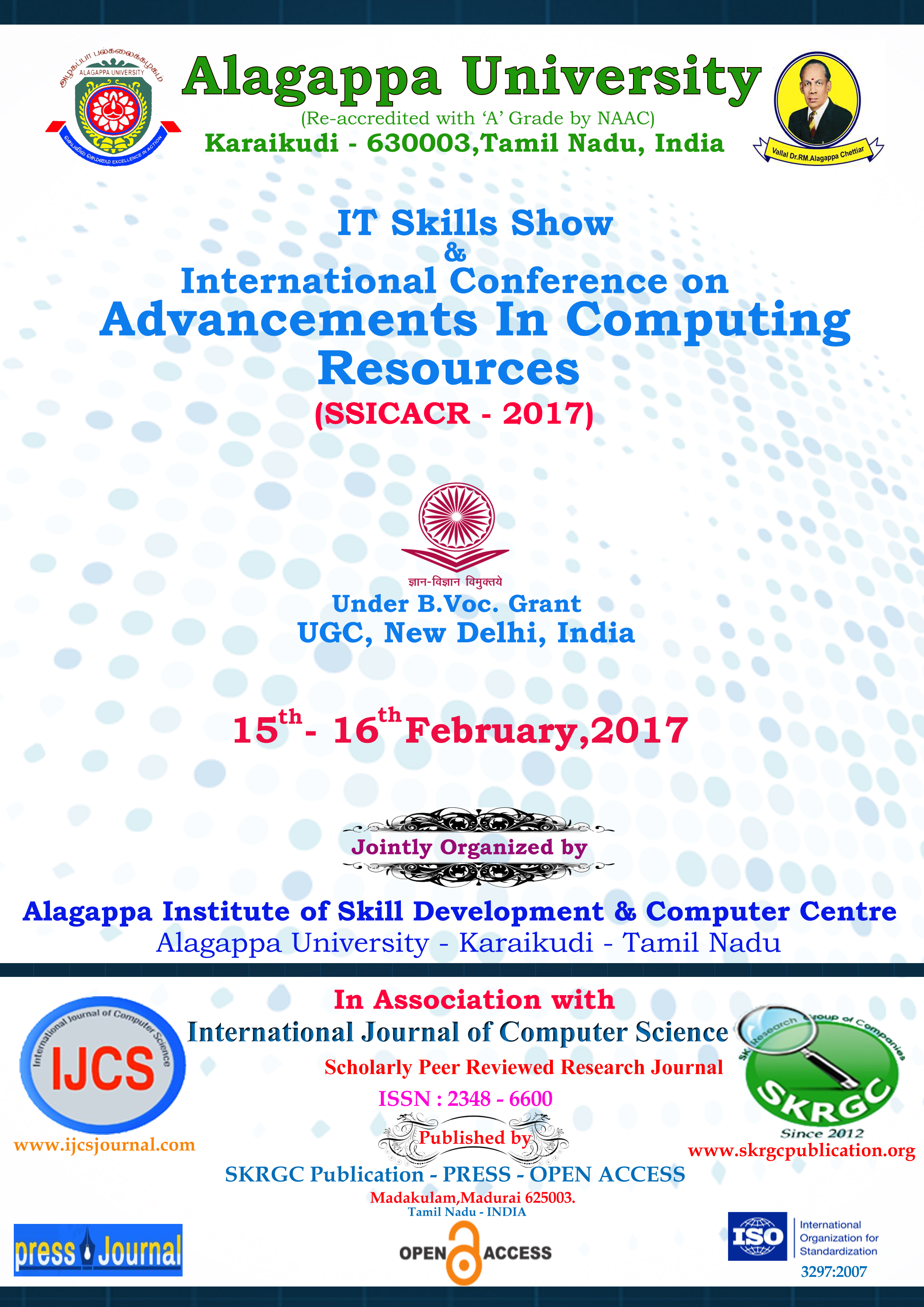FEEDING BIG DATA FOR ENHANCED SEARCH ENGINE APPLICATIONS
IT Skills Show & International Conference on Advancements in Computing Resources, (SSICACR-2017) 15 and 16 February 2017, Alagappa University, Karaikudi, Tamil Nadu, India. International Journal of Computer Science (IJCS) Published by SK Research Group of Companies (SKRGC)
Download this PDF format
Abstract
Big Data has its own popularity since it surrounds huge, complicated, growing data sets with many, autonomous sources. They are analyzed computationally to reveal patterns, trends and associations, more specifically relating to human behavior and interactions. Many of the IT investments turn towards Big Data for their better survival. Search Engine plays a predominant role in presenting information to all those who need it, but still struggles to satisfy the drastic changes in user’s requirements. So the search engine should be refined and fine tuned in all scopes, it is required to depend on some other emerging technologies to expedite the necessary issue in Search Engines. Search Engines request the robust services of Big Data for improving its essential functions like web crawling, indexing and summarization of data from the large repositories irrespective of the domain. The repository, in nature, may be dissimilar, independent sometimes and seems to be irrelevant with complex, evolving relationships, and keeps growing. Now a day we are brilliant enough to create quintillion websites for various applications. Maintaining and exploring the huge websites seems to be tedious. The ultimate challenge for Big Data applications is to explore the huge volumes of data and extract suitable information or knowledge for future actions. One of the toughest processes of search engine is to uncover the entire information or knowledge existing in the universe. User expects A to Z from the engine, but storing and extracting all observed data is nearly infeasible. In this paper, we are going to study and exercise by combining the power of two giant technologies, to satisfy the need and requirements of the knowledge seekers around the globe.
References
[1] R. Ahmed and G.Karypis, “Algorithms for mining the evolution of conserved Relational states in dynamic networks,” Knowledge and information systems, vol. 33, no. 3, pp. 603-630, dec.2012.
[2] M.H. Alam, J.W .Ha and S.K.Lee,”Novel Approaches to Crawling Important Pages Early”, Knowledge and information systems,vol.33,no.3,pp 707-734,Dec 2012
[3] D.Gillick, A.Faria, and J. Denero, map reduce: distributed computing for machine learning, Berkley, Dec 2006
[4] G.Duncan, “Privacy by design, “science, vol 317,pp.1178-1179,2007
[5] D.Centola,”The spread of behavior in an online social network experiment,”science,vol 329,pp.1194-1197,2010
[6] E.Birney,”The making of encode:lessons for big data projects”, nature vol.489 pp 49-51
[7] B.Efron, “Missing data, imputation and the bootstrap”.
[8] M.Helft,”Google uses searches to track flu’s spread”.
[9] S.Aral and D.walker, “Identifying influential and susceptible members of social networks.Enterprise Search in the Big Data Era:
[10] Recent Developments and Open Challenges
[11] Y. Lindell and B. Pinkas, “Privacy Preserving Data Mining,” J. Cryptology, vol. 15, no. 3, pp. 177-206, 2002.
[12] I. Kopanas, N. Avouris, and S. Daskalaki, “The Role of Domain Knowledge in a Large Scale Data Mining Project,” Proc. Second Hellenic Conf. AI: Methods and Applications of Artificial Intelligence,I.P. Vlahavas, C.D. Spyropoulos, eds., pp. 288-299, 2002
[13] Hinton GE, Osindero S, Teh Y-W(2006) A fast learning algorithm for deep belief nets. Neural Comput 18(7):1527–1554
Keywords
Autonomous sources, dimension, complex data, data mining.

